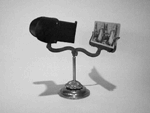|
www.hillmanweb.com/3d Views of Old China: Colour Series 3-D Stereoview Cards :: Text 1-150 RUSSIA JAPAN WAR in CHINA: 1904-05 The Siege of Port Arthur :: Cards 1-100 |
 |
|
www.hillmanweb.com/3d Views of Old China: Colour Series 3-D Stereoview Cards :: Text 1-150 RUSSIA JAPAN WAR in CHINA: 1904-05 The Siege of Port Arthur :: Cards 1-100 |
 |